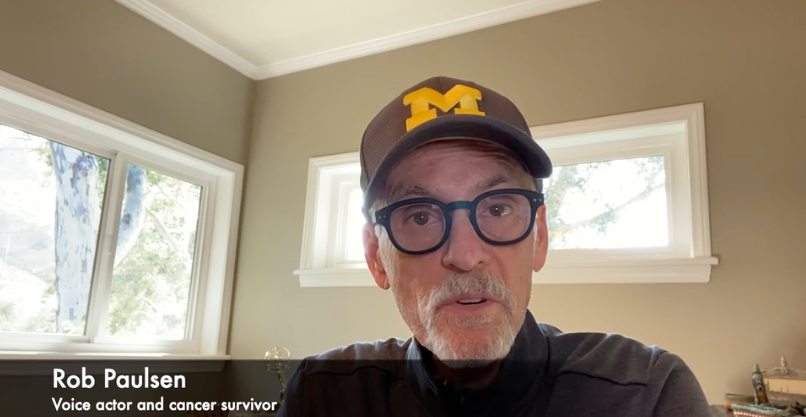Article
Active Surveillance ‘Most Definitely’ a Viable Treatment Option for Some Patients with Thyroid Cancer, Says Expert
Author(s):
Compared with surgery, active surveillance was just as effective and lowered anxiety levels in patients with low-risk papillary thyroid cancer.
Treatment with active surveillance elicited the same survival outcomes as surgery in patients with low-risk papillary thyroid cancer,according to recent study results.
The data also showed that anxiety levels were lower in the group that received active surveillance instead of surgery.
In an interview with CURE®, lead study author Dr. Allen S. Ho, a professor of surgery and director of the Head and Neck Cancer Program at Cedars-Sinai Medical Center in Los Angeles, said that these results confirmed that active surveillance is “most definitely” a viable option for patients with low-risk papillary thyroid cancer who would rather avoid undergoing surgery.
“We were treating patients with aggressive surgery and also noting that patients were extremely worried about the cancer diagnosis itself,” Ho explained. “This study was prompted because we wanted to better calibrate the treatment and better align with the idea that many of these cancers are low-risk and may not necessarily need treatment after all.”
Active surveillance is when a patient’s cancer is considered low-risk and therefore is closely monitored while they do not receive any treatment or therapy for the disease. However, if there are changes in test results and screening that demonstrate the cancer is getting worse, treatment is initiated. In fact, active surveillance is most often used in prostate cancer, however, Ho and colleagues wanted to evaluate if it is a feasible option for patients with low-risk papillary thyroid cancer.
The study — which was published in JAMA Oncology — included 222 patients (median age of 46.8 years; mostly female) who chose to undergo active surveillance (112 patients) or immediate surgery.
Of the 101 patients who remained on active surveillance during a median follow-up of more than three years, 46 of them had their tumors shrink and none developed regional/distant metastases.
Furthermore, tumor size growth of more than five millimeters was observed in 3.6% of patients, with an incidence of 1.2% at two years and 10.8% at five years. And growth in volume of more than 100% was observed in 7.1% of patients, with incidence of 2.2% and 13.7%, respectively. These types of parameters are commonly used to determine if a patient will need surgery and if it would be safe to operate, Ho explained.
Of note, those who underwent surgery after initially being on active surveillance (eight patients), or delayed surgery, experienced a similar outcome as those who received immediate surgery.
Additionally, disease-specific (percentage of individuals who have not died from their disease within a specified timeframe) and overall survival (time from enrollment or first treatment until death from any cause) rates were 100% in both groups.
Active Surveillance May Cross All Cancers
Ho explained that these results demonstrate that outcomes with active surveillance and surgery were equivalent for this particular patient population. He continued and noted that the results are also similar to those of other cancer types in which active surveillance is utilized.
“I think the outcomes not only parallel each other in terms of surgery versus surveillance for thyroid cancer, but across all cancers,” Ho explained. “Our results appear to be similar to what we see for a more established paradigm which is that of prostate cancer.”
Active Surveillance Reduces Anxiety
The investigators also evaluated anxiety levels in 84 patients. At the start of the study, patients who chose to receive immediate surgery experienced higher anxiety levels compared with those who selected to receive active surveillance. Ho noted that these findings make sense.
“I think patients who are perhaps more anxious, one could imagine that they want to address their cancer in a more definitive way, and they may want to prioritize cancer cure over things such as avoiding surgery, avoiding a scar or needing to take thyroid medication,” he explained.
Whereas those who elected for active surveillance are already less anxious about their cancer spreading or growing because they don’t feel the need for immediate surgery, according to Ho.
“I feel like those patients are more comfortable watching it and knowing that the likelihood of it growing is quite low if you look at the large-scale population data,” he said.
However, Ho noted that what surprised him was that this trend persisted throughout the study. For instance, even after their surgery, those high anxiety levels still persisted.
“So even though they were presumptively cured, they still were worried that the cancer might come back,” he explained. “And this tells us that this may be one way to help select patients for the kind of intervention that they want, whether it be surgery or surveillance.”
How to Determine if Active Surveillance is the Right Choice
Like many cancer treatments, active surveillance might not be the right choice for every patient, and whether or not it is the right way to go is really dependent on the patient, Ho noted.
Patients who are older, have other comorbidities and would otherwise be a poor candidate for anesthesia or surgery in general may be a good candidate for active surveillance.
Thyroid surgery could also cause voice changes, so active surveillance may be a good option for patients who want to avoid that side effect. There is also the concern that once the thyroid gland is removed that there is no more thyroid hormone, which is important for energy, metabolism and weight.
“I think for those patients who are willing to commit to ultrasound surveillance, who are not going to perhaps stay up at night wondering about their cancer, I think active surveillance as a long-term mechanism can be very, very effective,” Ho concluded.
For more news on cancer updates, research and education, don’t forget to subscribe to CURE®’s newsletters here.















